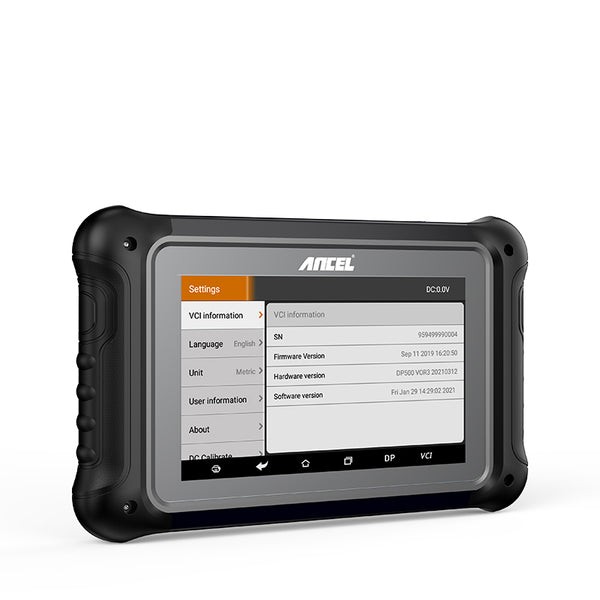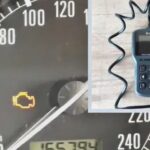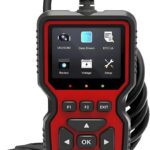Key fobs offer unparalleled convenience in modern vehicles, allowing for keyless entry and ignition. However, losing or damaging a key fob can be a major inconvenience, often requiring reprogramming to regain functionality. While dealerships offer key programming services, they can be costly and time-consuming. Fortunately, advancements in automotive technology have made it possible to reprogram key fobs at home using OBD2 software and diagnostic tools. This guide will delve into the process of How To Reprogram Key Fobs With Obd2 Software, empowering you with the knowledge to handle this task efficiently and effectively.
Understanding OBD2 Key Fob Programming
Before diving into the “how-to,” it’s crucial to understand the different methods of key fob programming, with a focus on OBD2 programming. Traditionally, car key programming could be approached in a few ways:
Onboard Programming: Some vehicles allow for onboard programming, which involves a sequence of actions performed inside the car, often using the ignition and door locks. This method, while convenient, is not universally applicable and can be complex depending on the vehicle’s make and model.
OBD2 Programming: This method leverages the vehicle’s On-Board Diagnostics II (OBD2) port, typically located beneath the dashboard. By connecting specialized OBD2 software and a compatible diagnostic scanner to this port, you can communicate directly with the car’s computer system to program key fobs. This approach offers a more standardized and often simpler method compared to onboard programming, especially for a wider range of vehicles.
EEPROM or “On-Bench” Programming: For more complex situations, particularly with older vehicles or when all keys are lost, EEPROM programming might be necessary. This involves physically removing the vehicle’s Electronic Control Module (ECM) or immobilizer unit and programming the key data directly onto the EEPROM chip using specialized equipment on a workbench. This method is generally more complex and requires specialized expertise, often performed by professional locksmiths.
Our focus here is OBD2 programming, as it strikes a balance between accessibility and effectiveness, making it a viable option for DIY enthusiasts and professional mechanics alike.
Why Choose OBD2 Software to Reprogram Key Fobs?
Opting for OBD2 software and a diagnostic scanner to reprogram your key fob offers several compelling advantages:
Convenience and Accessibility: OBD2 ports are standard in most modern vehicles, providing easy access for programming. This eliminates the need to dismantle car parts or rely solely on in-car procedures.
Cost-Effectiveness: Investing in OBD2 software and a scanner can be significantly cheaper in the long run compared to repeated dealership visits for key fob programming. The initial investment can pay for itself after just a couple of uses.
Versatility: OBD2 scanners and software are not limited to key programming. They often offer a wide range of diagnostic functions, allowing you to read and clear fault codes, perform system resets, and access valuable vehicle data. This makes them a multi-purpose tool for car maintenance and repair.
Efficiency: OBD2 programming can often be quicker than other methods, especially for adding or replacing key fobs. The software interface guides you through the process, streamlining the programming steps.
However, it’s important to acknowledge the limitations:
Compatibility: Not all vehicles support key fob programming via OBD2 for all models and years. It’s crucial to verify compatibility with your specific vehicle before attempting OBD2 programming.
Software and Scanner Requirements: You’ll need to invest in compatible OBD2 software and a diagnostic scanner that specifically supports key programming functions. Free or generic OBD2 software may not have the necessary capabilities.
Step-by-Step Guide: Reprogramming Key Fobs with OBD2 Software
While the exact steps might vary slightly depending on your specific OBD2 software and scanner, the general process for reprogramming key fobs using OBD2 software is as follows:
1. Gather the Necessary Tools:
- OBD2 Diagnostic Scanner with Key Programming Functionality: Ensure your scanner explicitly states it supports key programming. The ANCEL DP500 and ANCEL V6 PRO are examples of scanners known for their key programming capabilities.
- Compatible OBD2 Software: This software is often bundled with the diagnostic scanner or available from the scanner manufacturer. Install it on a laptop or compatible device.
- New Key Fob: Obtain a new, blank key fob that is compatible with your vehicle’s make, model, and year.
- Vehicle: Have your vehicle readily accessible, preferably in a well-ventilated area.
2. Connect the OBD2 Scanner:
- Locate the OBD2 port in your vehicle. It’s usually under the dashboard on the driver’s side.
- Turn your vehicle’s ignition to the “ON” position (without starting the engine).
- Plug the OBD2 scanner into the OBD2 port securely.
3. Launch the OBD2 Software and Select Vehicle Information:
- Open the OBD2 software on your laptop or device.
- Establish a connection between the software and the OBD2 scanner (usually via USB or Bluetooth).
- Follow the software prompts to select your vehicle’s make, model, and year. Accurate vehicle selection is crucial for successful programming.
4. Navigate to Key Programming or Immobilizer Functions:
- Within the OBD2 software, navigate to the “Key Programming,” “Immobilizer,” or a similarly named section. The exact menu names will vary depending on the software.
- Select the “Key Programming” function.
5. Follow the On-Screen Instructions:
- The OBD2 software will provide step-by-step instructions for programming the key fob. These instructions are specific to your vehicle and the software you are using.
- Common prompts might include:
- Entering a security code or PIN (some vehicles require this for key programming).
- Turning the ignition ON and OFF at specific intervals.
- Pressing buttons on the new key fob as instructed.
- Confirming the number of keys to be programmed.
- Follow each instruction carefully and precisely. Patience is key during this process.
6. Test the Reprogrammed Key Fob:
- Once the software indicates that the programming is complete, turn the ignition OFF and remove the OBD2 scanner.
- Test the new key fob to ensure it functions correctly. Check if it:
- Locks and unlocks the doors.
- Starts the vehicle.
- Activates any other programmed functions (e.g., trunk release, panic button).
- If the key fob functions as expected, the programming process is successful.
7. Repeat for Additional Key Fobs (If Necessary):
- If you need to program multiple key fobs, repeat steps 5 and 6 for each additional fob, following the software prompts.
Choosing the Right OBD2 Software and Scanner
Selecting the appropriate OBD2 software and scanner is critical for successful key fob programming. Consider these factors:
Vehicle Compatibility: Prioritize scanners and software that explicitly list compatibility with your vehicle’s make, model, and year for key programming functions. Check compatibility lists provided by manufacturers.
Key Programming Features: Ensure the scanner and software offer comprehensive key programming features, including:
- Adding new keys.
- Deleting old keys.
- All keys lost programming (for advanced scenarios).
- Remote programming.
- PIN code reading (if required for your vehicle).
Ease of Use: Opt for software with a user-friendly interface and clear, step-by-step instructions for key programming. Intuitive software can significantly simplify the process, especially for beginners.
Updates and Support: Choose reputable brands that provide regular software updates to support newer vehicles and maintain functionality. Reliable customer support can be invaluable if you encounter issues during the programming process.
Budget: OBD2 scanners with key programming capabilities range in price. Determine your budget and compare features and reviews within your price range. The ANCEL DP500 and V6 PRO are well-regarded options offering a balance of features and value.
Troubleshooting Common OBD2 Key Fob Programming Issues
While OBD2 key fob programming is generally straightforward, you might encounter some challenges. Here are common issues and troubleshooting tips:
Scanner Compatibility Problems:
- Verify Compatibility: Double-check that your scanner and software are compatible with your vehicle’s make, model, and year for key programming.
- Software Updates: Ensure your OBD2 software is updated to the latest version, as updates often include expanded vehicle compatibility.
Software Issues:
- Software Glitches: Restart the software and your device. Sometimes a simple restart can resolve temporary software glitches.
- Installation Problems: Reinstall the OBD2 software, ensuring you follow the installation instructions carefully.
- Connection Errors: Check the connection between the OBD2 scanner and your device. Ensure the USB cable or Bluetooth connection is stable.
Key Fob Recognition Failures:
- Incorrect Key Fob: Verify that you are using a new, blank key fob that is compatible with your vehicle.
- Programming Errors: Carefully re-read and re-follow the software instructions. Ensure you are completing each step accurately and within any specified timeframes.
- Low Battery in Key Fob: Although you are programming a new fob, ensure the battery is not depleted.
Immobilizer System Interference:
- Security System Issues: In rare cases, the vehicle’s immobilizer system might prevent key programming. Consult your vehicle’s manual or seek professional assistance if you suspect immobilizer issues.
Safety Precautions and Important Considerations
- Read Instructions Carefully: Always thoroughly read and understand the instructions provided by your OBD2 software and scanner before starting the key programming process.
- Vehicle Battery: Ensure your vehicle’s battery is in good condition before starting programming. A low battery can interrupt the process.
- Security Codes: Be aware that some vehicles require security codes or PINs for key programming. You may need to obtain this code from your dealership or a locksmith.
- Potential Risks: While generally safe, incorrect key programming can potentially cause issues with your vehicle’s immobilizer system. Proceed cautiously and double-check all steps.
- When to Seek Professional Help: If you are uncomfortable with the DIY process, encounter persistent issues, or are programming keys for a high-security vehicle, it’s always advisable to seek assistance from a qualified locksmith or automotive technician.
Conclusion
Reprogramming key fobs with OBD2 software offers a convenient and cost-effective alternative to dealership services. By understanding the process, choosing the right tools, and following instructions carefully, you can successfully program key fobs at home. OBD2 scanners like the ANCEL DP500 and V6 PRO empower you with the capabilities to manage your vehicle’s key programming needs and perform a wide range of diagnostic functions. Embrace the power of OBD2 technology and take control of your car key management.
FAQs
What is OBD2 programming for key fobs?
OBD2 programming for key fobs is a method of reprogramming car key fobs using the vehicle’s On-Board Diagnostics II (OBD2) port and specialized software and diagnostic scanners. This allows direct communication with the car’s computer to add, delete, or reprogram key fobs.
What tools are needed for OBD2 key fob programming?
You need an OBD2 diagnostic scanner with key programming functionality, compatible OBD2 software (often provided with the scanner), and a new, blank key fob compatible with your vehicle.
Is OBD2 key fob programming safe?
Yes, when performed correctly, OBD2 key fob programming is generally safe. However, it’s crucial to follow instructions carefully, use compatible tools, and be aware of potential risks associated with incorrect programming.
How long does OBD2 key fob programming take?
The duration of OBD2 key fob programming can vary, but it typically ranges from 5 to 30 minutes per key fob, depending on the vehicle make and model, the complexity of the programming process, and the speed of the OBD2 scanner and software.
[


